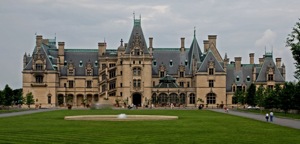Mansion
Origin
Middle English, from Anglo-French, from Latin mansion-, mansio, from manēre to remain, dwell; akin to Greek menein or μονή monay to remain
Definitions
- 1a obsolete : the act of remaining or dwelling : stay
- b archaic : dwelling, abode
- c. obsolete A stopping place on a journey; the distance between two stopping places; a stage. Used chiefly in the context of the Bible and the Middle East.
- 2a (1) : manor house (2) : a large imposing residence
- b : a separate apartment or lodging in a large structure
- 3a : house
- b : one of the 28 parts into which the moon's monthly course through the heavens is divided
Description
A mansion, manson or manor is a very large dwelling house. U.S. realtors define a mansion as a dwelling of over 8,000 square feet (740 m2). A traditional European mansion was defined as a house which contained a ballroom and tens of bedrooms. Today, however, there is no formal definition beyond being a large and well-appointed house.
The word itself derives (through Old French) from the Latin word mansiō ("act of remaining or staying", a verbal noun from manere "to remain" or "to stay".) In the Roman Empire, a mansio was an official stopping place on a Roman road, or via, where cities sprang up, and where the villas of provincial officials came to be placed. The Scots word "manse" originally defined a property large enough for the Minister of the parish to maintain himself, but a mansion is no longer self-sustaining in this way (compare a Roman or medieval villa). 'Manor' comes from the same root — territorial holdings granted to a lord who would remain there — hence it can be seen how the word 'Mansion' came to have its meaning.[1]
